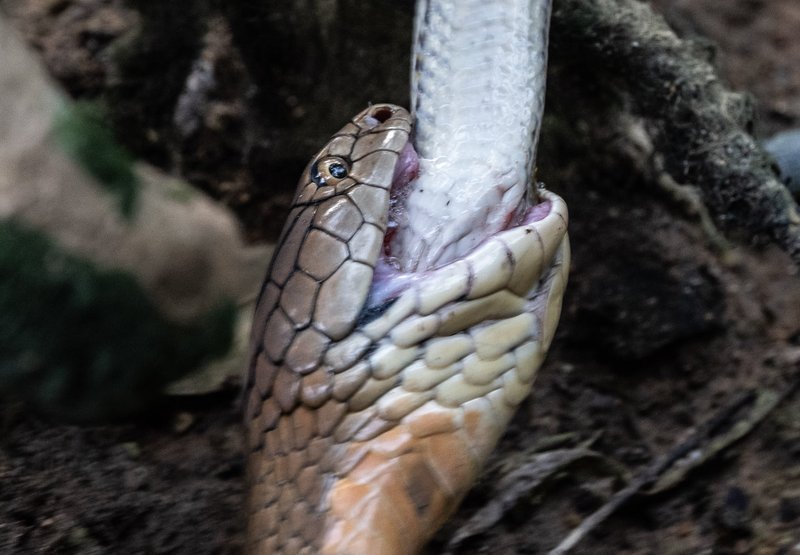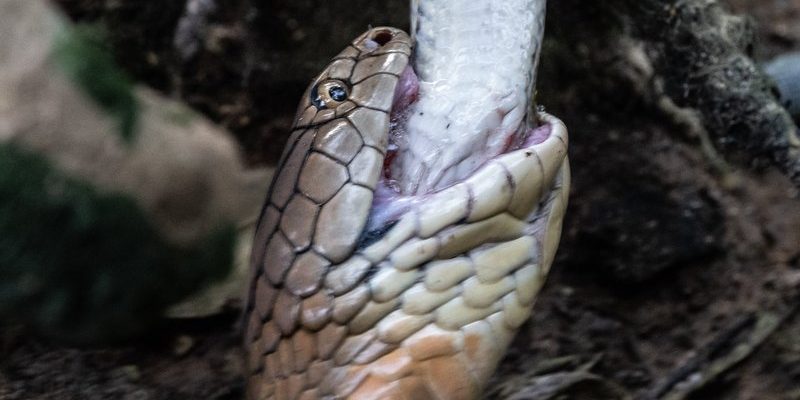
Think of the king cobra’s hunting strategy as a thrilling game of chess—calculated, patient, and often surprising. This remarkable snake relies on its unique skills and adaptations more than brute strength alone. So, grab a cup of coffee and let’s take a closer look at the diet of the king cobra and the clever methods it uses to capture its prey.
Understanding the King Cobra’s Diet
The king cobra, scientifically called *Ophiophagus hannah*, has a diet that’s quite specialized. It primarily feeds on other snakes, including both venomous and non-venomous species. You might be surprised to learn that the king cobra will eat smaller snakes, like rat snakes or even other king cobras, when they get the chance. This makes it a formidable predator in its ecosystem.
It’s important to note that this snake’s diet can vary depending on its habitat. In the lush forests of Southeast Asia, where they thrive, king cobras may also feast on lizards, frogs, and occasionally small mammals. The availability of different prey types means they can adapt their hunting strategies accordingly, which is vital for their survival.
So, why snakes? Well, the king cobra is often referred to as a “snake eater,” and honestly, it has the skills to back that title. Its specialized diet has evolved over generations, allowing it to excel in its role as an apex predator. The combination of sharp senses and highly developed hunting techniques makes it one of the most fascinating snakes around.
How King Cobras Hunt
When it comes to hunting, king cobras are not just mindless predators. Here’s the thing: they employ a mix of stealth and patience. They’re experts at blending into their surroundings, using camouflage to get as close to their prey as possible without being detected. Imagine sneaking up on a friend while they’re busy texting; that’s how a king cobra approaches its next meal.
Once they spot their target, king cobras will carefully assess the situation. They can remain completely still for long periods, waiting for the perfect moment to strike. This patience is crucial because rushing in can lead to missed opportunities. Typically, they’ll use their keen eyesight and thermal receptors to detect the warmth of a potential meal, which helps them locate cold-blooded snakes even in the dark.
They have two options when it’s time to attack: they can either launch a quick strike or employ a more methodical approach. The strike is incredibly fast and precise, allowing them to inject venom directly into their prey. This venom acts quickly, paralyzing or killing the snake almost instantly. The king cobra’s bite can be a game-changer, and it knows how to use it.
The Role of Venom in Hunting
You might be curious about the king cobra’s venom and how it fits into its hunting strategy. The venom of a king cobra is one of the most potent in the snake world. It contains neurotoxins that can affect the nervous system of its prey. This means that, once bitten, a smaller snake won’t stand a chance.
Interestingly, the king cobra doesn’t just rely on its venom. Instead, it uses it as a tool in its hunting arsenal. After delivering a bite, the king cobra often allows its prey to wander off for a bit, waiting for the venom to do its job. This tactic conserves energy and reduces the risk of injury to itself. Imagine a cat playing with a mouse; the cat is waiting for the right moment when its prey is too weak to escape.
Once the venom has incapacitated the prey, the king cobra will track it down and consume it whole. You might wonder how it can eat something larger than its own head. Well, they have incredibly flexible jaws that can stretch wide enough to swallow prey large enough to be quite astonishing.
Digesting the Meal
After a successful hunt, you might think the king cobra is done until its next meal. But there’s more to the story. The digestion process for a king cobra can take quite some time. Depending on the size of the prey, it may take days or even weeks for the snake to fully digest its meal.
During digestion, the king cobra’s metabolism ramps up significantly. Interestingly, it can take a long nap after a big meal, conserving energy while its body works hard to break down the food. As a result, you might find a king cobra resting or coiled up for days at a time, letting nature do its work.
One of the fascinating aspects of their digestion is the way king cobras utilize all the nutrients from their prey. This efficiency ensures they get the most out of every meal, which is essential for their survival in the wild.
Hunting Techniques: Ambush vs. Active Pursuit
Now that we’ve covered the basics of their hunting style, let’s look at the two main techniques king cobras use: ambush and active pursuit. Both strategies have their advantages, depending on the situation.
Ambush hunting is when the king cobra will quietly hide, waiting for prey to come close. This approach works best in dense foliage or areas where visibility is low. Imagine a skilled fisherman waiting patiently for a fish to bite; that’s the level of concentration the king cobra employs.
On the other hand, in scenarios where the prey is actively moving, the king cobra may switch to active pursuit. This technique involves tracking and chasing down the prey. It requires higher energy but can be effective if the cobra is hungry and the territory is familiar. The combination of stealth, speed, and power makes king cobras versatile hunters.
Choosing the right hunting strategy depends on various factors, including the type of prey available and the cobra’s own hunger levels. Importantly, both techniques highlight the adaptability of king cobras in different environments.
In summary, the life of a king cobra is a blend of patience, skill, and sheer power. From its specialized diet of snakes to its clever hunting techniques, it’s clear that these creatures are more than just fearsome predators—they’re sophisticated masters of their craft.
Understanding what the king cobra eats and how it hunts not only reveals the intricacies of this species but also helps us appreciate their role in the ecosystem. These snakes, with their stunning beauty and daunting abilities, are an essential part of our natural world.
So next time you hear the word “king cobra,” remember it’s not just about the danger it poses—it’s about the incredible story of survival and adaptation in the wild. Whether they’re blending into their surroundings or using their venom to secure a meal, king cobras are truly a marvel to behold.

